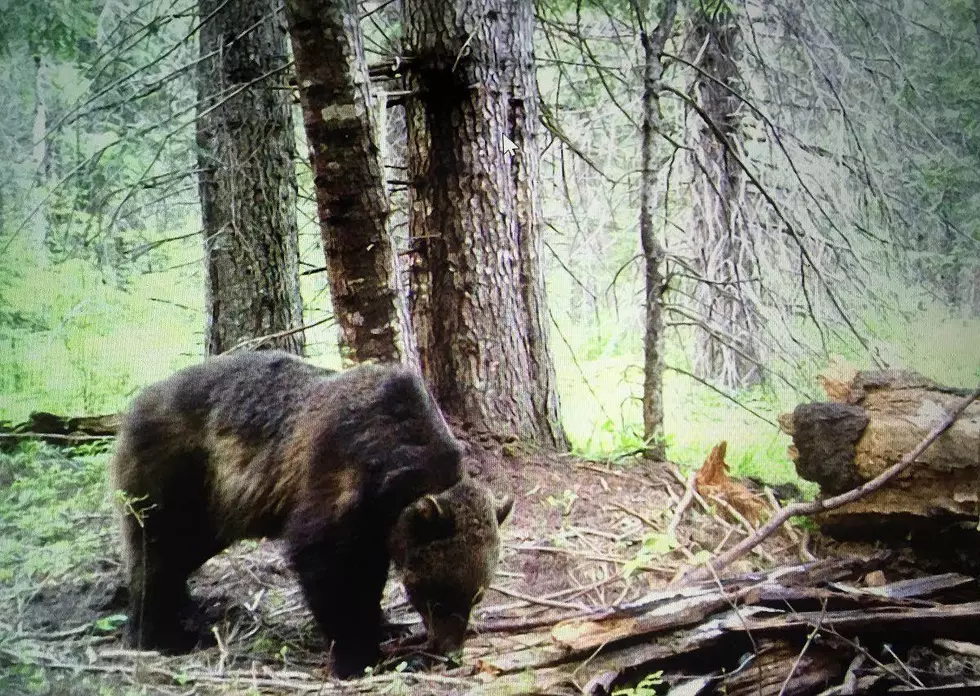
Ninth Circuit narrows wolf trapping ban in Montana grizzly territory
Alanna Mayham
(CN) — An order limiting wolf trapping and snaring in Montana’s grizzly bear territory survived the scrutiny of a Ninth Circuit panel Tuesday, but the question of how much land a federal judge can restrict to protect the state's threatened grizzlies from wolf traps remains.
In January, a three-judge panel took a skeptical view of a 2023 injunction that prohibited wolf trapping in a broad swath of western Montana outside of the narrow timeframe of Jan. 1 to Feb. 15 annually, or when grizzlies are most likely to be hibernating in dens.
U.S. District Judge Donald Molloy's preliminary injunction was aimed at protecting grizzlies from wolf traps — an issue opponents say is becoming more common because the warming climate is pushing bears to forage later into the winter and even earlier in the spring.
But Molloy’s order prohibited trapping in a much larger part of Montana than what conservation groups requested and did not follow the state’s scientific determination of where grizzly bears live.
On Tuesday, two-thirds of the panel affirmed Molloy’s injunction because the plaintiff organizations — Flathead-Lolo-Bitterroot Citizen Task Force and WildEarth Guardians — demonstrated that Montana’s recreational wolf trapping and snaring regulations would harm grizzly bears in violation of the Endangered Species Act.
“Under our limited and deferential standard of review, we affirm the district court’s grant of injunctive relief,” wrote U.S. Circuit Judge Mark J. Bennet, a Donald Trump appointee, with the concurrence of U.S. District Judge Robert S. Lasnik, a Bill Clinton appointee.
Senior U.S. Circuit Judge Richard C. Tallman partially dissented, explaining that he would have vacated the entire injunction because the plaintiffs’ evidence falls short of proving that irreparable harm is likely — not just possible.
“While I agree with the majority that plaintiffs established a serious question on the merits, the evidence of record establishes that plaintiffs failed to show a reasonably certain threat of imminent harm to grizzly bears should Montana’s wolf regulations remain in force,” the Clinton appointee wrote.
Tallman also argued that the plaintiffs’ evidence is too speculative to warrant an injunction, particularly regarding how climate change affects grizzly denning habits and the plaintiffs’ lack of verified reports of grizzly bears getting caught in recreational wolf traps after 2013.
The other judges disagreed.
“As the district court pointed out, one of plaintiffs’ experts declared that ‘only 12% of unpermitted grizzly bear killings are actually reported,’ and that the ‘data shows that trappers who find grizzly bears in their traps are highly unlikely to call a government agent,’” Lasnik wrote.
Lasnik added how Montana’s evidence showed that over 25% of grizzly bear killings go unreported, suggesting that verified reports are not the best indicator of how often grizzlies are trapped.
All three judges could agree that the injunction is geographically overbroad.
“The district court enjoined wolf trapping and snaring ‘in all areas included in wolf regions one through five, plus Hill, Blaine and Phillips counties,’” Lasnik wrote. “That comprises what appears to be more than half of the entire state of Montana and includes expansive areas outside the occupied grizzly range and even some areas east of Billings — areas that plaintiffs did not even ask to be covered by the injunction.”
The panel also took up Montana’s argument of how the injunction prohibits state researchers from trapping and snaring wolves in the summer for scientific purposes — even though the injunction never prevented that.
On March 19, Montana filed an unopposed motion to modify the injunction so it could allow the Montana Department of Fish, Wildlife and Parks and other management agencies to trap wolves for scientific and livestock conflict management purposes. Molloy denied the request on March 25, explaining that such agencies already had the authority to perform research trapping and they were unaffected by the injunction.
“Apparently the Ninth Circuit wasn’t aware of that,” said Mike Bader of Flathead-Lolo-Bitterroot in an interview.
Bader also noted how Tallman in his dissent did not acknowledge a permanent injunction from U.S. Magistrate Judge Candy Dale in March that banned all wolf trapping and snaring in Idaho’s panhandle, Clearwater, Salmon and Upper Snake regions between March 1 and Nov. 30 — the grizzly bear’s non-denning season.
“She actually cited the Molloy injunction ruling as an influence on her ruling, so we hope we can get a permanent injunction because then we would have common law in the Ninth Circuit from both Idaho and Montana,” Bader said.
And that hope might not be far from reality, especially since Molloy’s injunction will stay in place until he adjusts the geographic scope of the order. Bader said a final ruling on the plaintiffs’ motion for summary judgment could arrive within the next few months and that a favorable outcome would also prohibit coyote traps in grizzly territories.
“I think the big issue is climate change,” Bader said, adding how states rely on outdated data for grizzly denning behaviors.
“Especially this past winter, we had reports of females with cubs out in January and a lot of bears out well into December and even past Christmas,” Bader said. “So, the old dates really don’t apply because of the change.”
